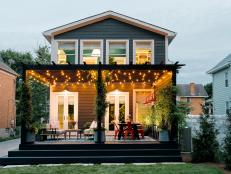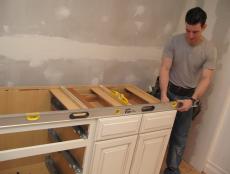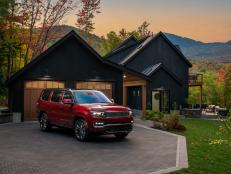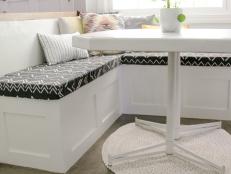1 / 10
Photo: Design by May Sung; Photo by Manolo Langis
Use Scale and Material To Create an Urban Loft Feel
Among the hallmarks of loft spaces are their size and the visibility of materials that might otherwise be hidden or treated to a smooth finish: metal pipes and ductwork and well-worn wood flooring, for example. Architect May Sung explains how she used these elements to create a loft-style look: "In this kitchen, we utilized proportion and texture to create interest in the space. The texture of the reclaimed wood juxtaposed next to the industrial element of the table legs created warmth and coziness, emphasized by the over-scaled ceiling pendant."












